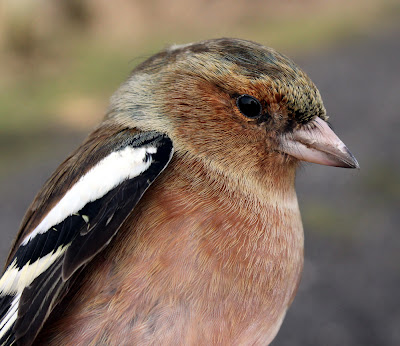The weather’s becoming unfit for man or beast. Storm Diana is hurtling up the Irish Sea and it looks like there will be zero birding or ringing for a few days or more.
So for this post I'm turning to the British Trust for Ornithology (BTO) and recent information on indicators of bird population trends for UK and England, first published on 8 November 2018.
These indicators are part of the Government’s suite of biodiversity indicators that show the fortunes of birds of farmland, woodland, waterways & and wetlands, and marine & coastal between 1970 and 2017.
Regular readers may recognise a number of bird names here as they occur here on the blog with alarming regularity, usually for the reasons highlighted again by this latest information, the relentless downward trend of their populations. The graphs below may suggest some recent levelling off which may not be a cause for celebration when so many species are at levels which could hardy drop much more. There are still too many downward trends on the diagrams and hardly any showing upward movements. The bold highlights are my own, those that equate to the situation here in Lancashire.
The indicators are calculated annually by the BTO, RSPB and Department for Farming and Rural Affairs (Defra) and are based almost entirely on data collected by volunteers contributing to national bird monitoring schemes such as the BTO/JNCC/RSPB Breeding Bird Survey and the BTO/RSPB/JNCC Wetland Bird Survey.
Population trends of common birds that are native to, and breed in, the UK are assessed using two assessment periods: long-term (for most species between 1970 and 2017), and short-term (2011-2016). The wintering bird indicator shows how the internationally-important numbers of wintering waders, wildfowl and other water-birds using coasts and wetlands have changed since c1975.
Changes in the abundance of breeding birds of woodland, farmland, water and wetlands and all-species in the UK.
The breeding farmland bird index continued to fall and has declined by more than half between 1970 and 2017 in the UK. Whilst most of these declines occurred in the late 1970s and early 1980s, there was a short-term decline of 7% since 2011. Farmland specialists showed the most prominent declines; for example, Corn Bunting, Grey Partridge, Turtle Dove and Tree Sparrow all declined by at least 90% since 1970. Grey Partridge and Turtle Dove also declined strongly in the short-term, but there was no change for Corn Bunting or Tree Sparrow during this time. Conversely, some farmland specialists (e.g. Stock Dove and Goldfinch) have more than doubled in the long-term. This illustrates that responses to pressures are likely to vary between species.
Changes in the abundance of farmland birds 1970 to 2017 in the UK.
Grey Partridge
The breeding woodland bird index for the UK has declined by 25% between 1970 and 2017, and 5% over the recent short-term period. These declines are greater than documented previously, driven by the declining numbers of woodland specialists; down 46% since 1970.
Generalist woodland species, typically those that also breed in gardens or wooded areas of farmland, have increased overall, by 14%. Woodland species such as
Lesser-spotted Woodpecker, Spotted Flycatcher and Willow Tit have shown the most serious declines (more than 80%) since 1970, whilst numbers of Long-tailed Tit, Blackcap and Nuthatch have almost doubled, and the Great-spotted Woodpecker is three times as abundant as it was several decades ago.
Changes in the abundance of woodland birds between 1970 and 2017 in the UK.
The breeding water and wetland bird index for the UK fell by 6% between 1975 and 2017, but over the short-term increased slightly by 3%. Over the long-term, species associated with slow-flowing and standing water, and with reed beds, fared better than those associated with fast-flowing water or with wet grasslands. Lapwing, Redshank, Snipe and Common Sandpiper showed the strongest declines over the long-term, athough Snipe has shown a recovery of 27% in the recent short-term period.
The abundance of breeding water and wetland birds between 1975 and 2017 in the UK.
Snipe
Ringed Plover
The breeding seabird index was not updated this year due to a shift of effort by the JNCC Seabird Monitoring team towards the ongoing Seabird Census. In the UK, the seabird index declined by 22% between 1986 and 2015. Declines began in the mid-2000s; and more recently, between 2009 and 2014 there was a 14% decline in the indicator, driven largely by large declines for Arctic Skua and Black-legged Kittiwake.
The wintering waterbird index was 106% higher than in 1975/1976 in the UK. The index peaked in the late 1990s, and has declined since; by 4% between 2010/2011 and 2015/2016.
Some wintering waterbirds have increased markedly over the long-term, including Gadwall, Whooper Swan, Avocet and Black-tailed Godwit. Conversely, White-fronted Goose, Eider,
Ringed Plover and Dunlin all declined.
The abundance of wintering waterbirds between 1975 /76 and 2016/17 in the UK.

























































.jpeg)










.jpg)












